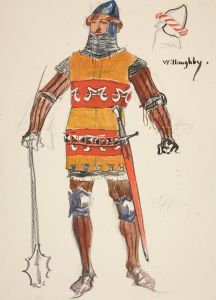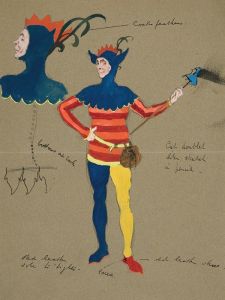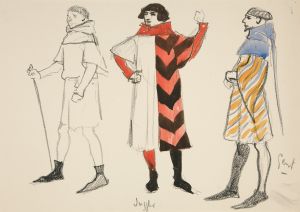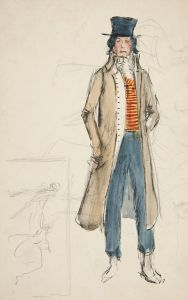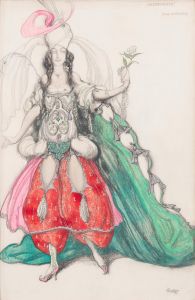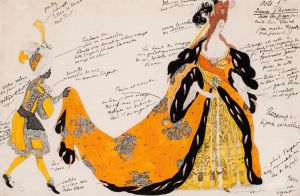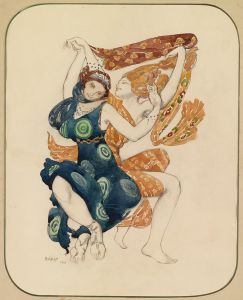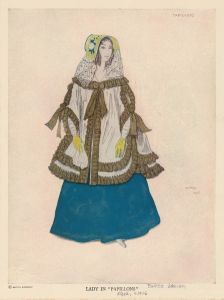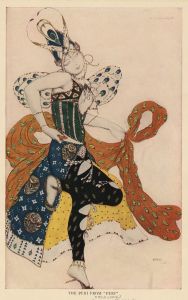
Costume Design For Tamara Karsavina As La Fiancée In Le Dieu Bleu
A hand-painted replica of Léon Bakst’s masterpiece Costume Design For Tamara Karsavina As La Fiancée In Le Dieu Bleu, meticulously crafted by professional artists to capture the true essence of the original. Each piece is created with museum-quality canvas and rare mineral pigments, carefully painted by experienced artists with delicate brushstrokes and rich, layered colors to perfectly recreate the texture of the original artwork. Unlike machine-printed reproductions, this hand-painted version brings the painting to life, infused with the artist’s emotions and skill in every stroke. Whether for personal collection or home decoration, it instantly elevates the artistic atmosphere of any space.
The artwork "Costume Design for Tamara Karsavina as La Fiancée in Le Dieu Bleu" was created by Léon Bakst, a renowned Russian artist and stage designer. Bakst was a key figure in the Ballets Russes, a groundbreaking ballet company founded by Sergei Diaghilev in the early 20th century. The Ballets Russes was known for its innovative collaborations between choreographers, composers, and visual artists, and Bakst played a significant role in shaping its visual identity.
This particular costume design was created for the 1912 ballet Le Dieu Bleu (The Blue God), which premiered at the Théâtre du Châtelet in Paris. The ballet was choreographed by Michel Fokine, with music composed by Reynaldo Hahn and a libretto by Jean Cocteau and Frédéric de Madrazo. The production was inspired by themes from Indian mythology and culture, though it was filtered through a European lens typical of the Orientalist aesthetic of the time.
Tamara Karsavina, one of the leading ballerinas of the Ballets Russes, performed the role of La Fiancée in this production. Karsavina was celebrated for her grace and artistry, and her collaboration with Bakst and other artists of the Ballets Russes contributed to her enduring legacy in the world of dance.
Bakst's costume designs for Le Dieu Bleu are characterized by their vibrant colors, intricate patterns, and luxurious materials, reflecting his fascination with Eastern art and culture. The design for La Fiancée features elaborate detailing and a rich palette, emphasizing the exotic and fantastical elements of the ballet. Bakst's work not only enhanced the visual spectacle of the performance but also influenced fashion and design trends of the era.
While Le Dieu Bleu was not as successful as some of the Ballets Russes' other productions, it remains significant for its artistic contributions and the collaboration between prominent figures like Bakst, Fokine, and Karsavina. Bakst's costume designs, including this one for Karsavina, are now considered iconic examples of early 20th-century stage design and are preserved in various museum collections and archives around the world.





